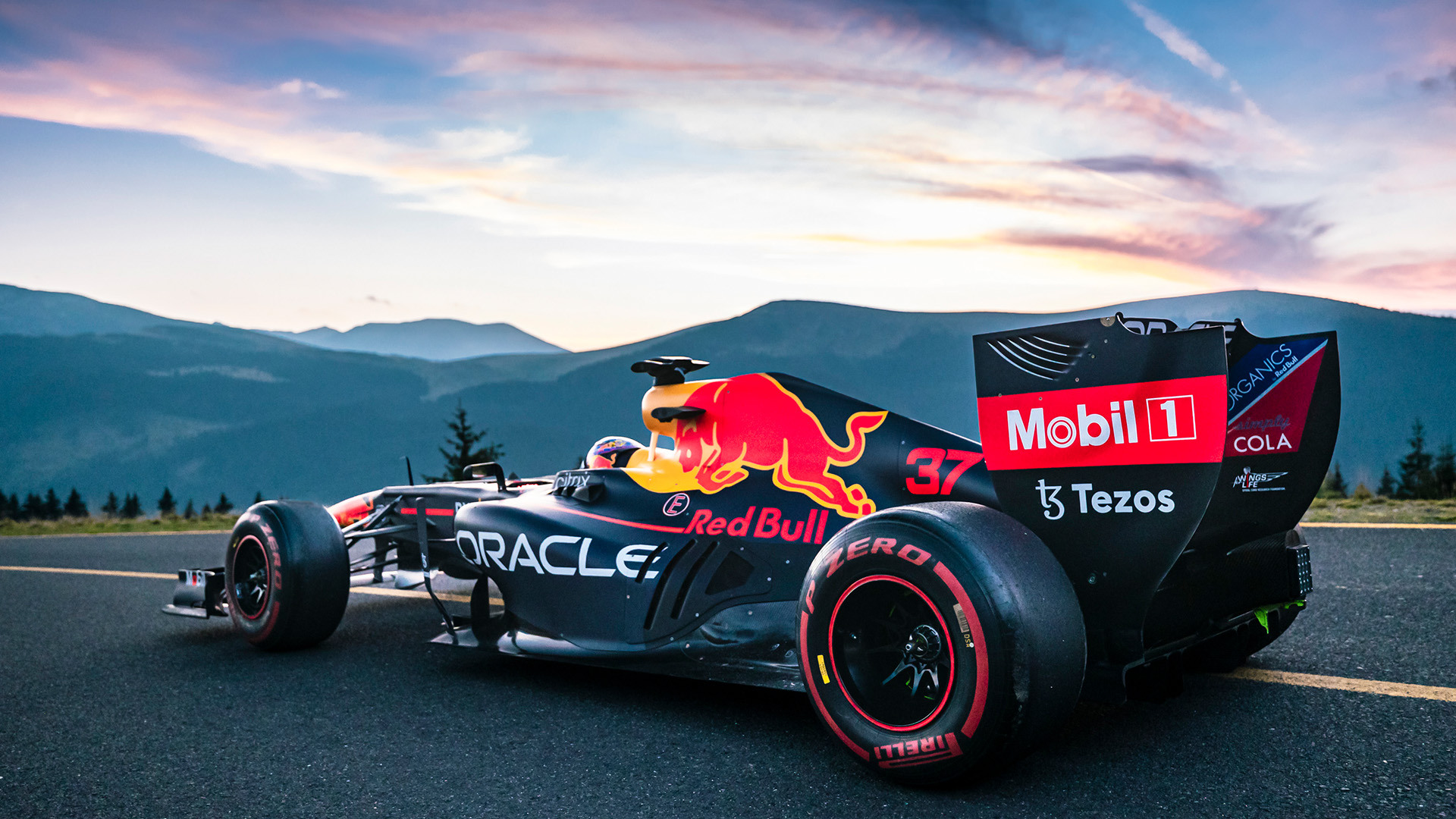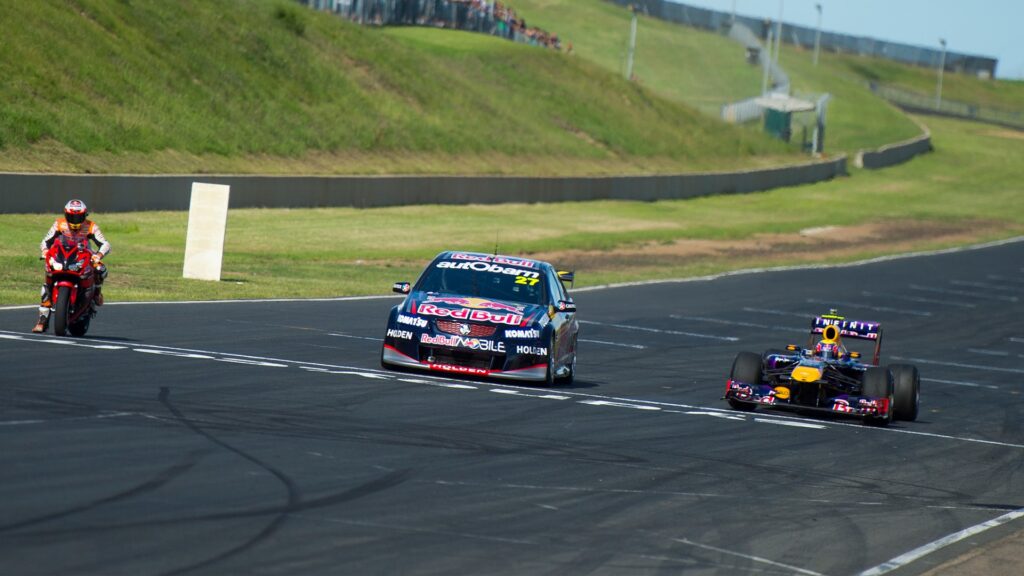Red Bull RB7 Deep Dive

With the confirmation of Red Bull Racing’s RB7 model taking to the Mount Panorama Circuit at the Bathurst 12 Hour with Liam Lawson behind the wheel, let’s take a look at the race car in question – a significant one in the history of the Milton Keynes-based squad.
The Background and the Season
The 2011 season was an incredible one for the Red Bull Racing squad, although, the outfit had a reasonable runup to the all-conquering RB7.
Firstly Adrian Newey joined the squad in 2006, however, the secret sauce for the outfit’s success came later: fresh from his maiden F1 victory aboard the junior Scuderia Toro Rosso at Monza, Sebastian Vettel joined the lead team for the 2009 season.
Success came in his stride – mounted with the RB5 model, Vettel topped the podium four times, namely in the third round in China, at Silverstone, Suzuka and Abu Dhabi.
Aussie Mark Webber broke through as well with an emotional win at the Nürburgring, with the feat repeated in Brazil – the results came after he battled back following serious off-season injuries inflicted by a Tasmanian bicycle accident with a four wheel drive.
That season however fell in the favour of Jenson Button and the sensational Brawn, which dominated the early rounds, before a lack of budget saw that team’s charge tapper off during the closing Grands Prix.
Fast forward to 2010, and Red Bull were double champions after an epic title fight.
The team sealed their maiden constructor’s title and Vettel his first driver’s crown, although he had to work for it.
Five wins, including at the season finale in Abu Dhabi gave him a slender victory over Ferrari-mounted Fernando Alonso ahead of Webber, who tallied four further wins, although his crash in South Korea ultimately proved costly, while Lewis Hamilton was also in the conversation aboard his McLaren.
Evolution rather than revolution, the RB7 broke cover on February 1st, 2011, at Valencia in Spain, and from there, the field was in for a modern belting.
In 19 races, Vettel claimed 11 victories, five other podiums, and 15 pole positions.
Yet, it easily could have been more: in tricky conditions in Montreal, he slid off on the final circuit, gifting the win to Button.
By season’s end, it was a spanking in the points: the German scored 32 per cent more points than the next-best driver, with his third place in Japan enough to make him the youngest-ever double-world champ.
A definite highlight was Monza, where Vettel won from pole with the fastest lap, leading every lap for the first time in his career, while his pole position in Brazil broke Nigel Mansell’s F1 single-season record.
Webber chimed in too with a win at the season finale in Brazil, and stood on the podium nine other times to claim third in the standings behind the McLaren of Button.
He played his part in some big results for the team, backing up Vettel to score one-twos in Turkey and Belgium.
Reserve driver Daniel Ricciardo wasn’t required to race during the season.
Five different RB7 chassis were pressed into service throughout the season, with Webber campaigning the first four at various stages.
Vettel kicked off the year aboard chassis 03, “Kinky Kylie”, before moving to 05 from Monza onwards.
The model has subsequently become a favourite in the Red Bull stable for use in promotional activity, with it previously visiting these shores for use at The Top Gear Festival, where Mark Webber drove the car in demonstrations at Sydney Motorsport Park.

Technically Speaking
While the RB6 was a hard act to follow, the RB7 was clearly up to the task, and with Chief Technical Officer Newey at the helm, the car delivered the goods in the face of a raft of significant rules changes.
KERS
The compulsory introduction of KERS for the 2011 season was a major challenge for the teams, especially for Red Bull, considering the weight disadvantage of folding up Webeer’s lanky frame into the cockpit envelope.
The other packaging dilemma was fitting the system into the car without taking away from aerodynamics.
Finally, there was simply making the new-fangled technology work within the dynamics of an F1 car, especially when the system was charging.
Red Bull had earlier designed the RB5 model to accept a KERS system, and the squad trialled it in testing, before benching the concept.
In essence, this put the team behind the eight-ball compared to other teams who took the option to pursue the technology in the following seasons.
KERS was parked by RBR in the opener at Albert Park after issues in Friday practice, however, by Turkey, the team were on top of the problems.
Weight
To accommodate the KERS system, the minimum weight of the cars was increased, which had a knock-on effect of impacting tyre and braking wear.
Drag Reduction System
Another big unknown coming into the season would be the application of movable rear wings for the first time.
Would it be dangerous? Would it make overtaking too easy?
The answers were no, and definitely not, especially if you were another car looking to make its way past the RB7.
Deleted from the allowances in the rule book was the F-Duct, whereby McLaren innovated by designing the car around the driver being able to alter the aero of the car by blocking a hole in the side of the cockpit, which effectively stalled the rear wing at speed.
Some teams played catchup with designs that dictated one-handed driving- in the end, the system was outlawed by the FIA.
Elsewhere Aerodynamically
Double diffusers, so effectively implemented by Brawn GP in 2009, were outlawed in 2011, drastically cutting downforce at the rear of the cars.
Blown defusing was also out, but the Red Bull team innovated with a wide, flat exhaust, which exited on top of the floor, and still managed to interact with the diffuser.
The outfit continued to explore cold blowing off-throttle, where airflow would be maintained through the exhaust system, even when the driver had his foot off the loud pedal.
By restricting fuel flow to the engine with the ignition retarded, the engine acted like a compressor, continuing to feed air through to the rear of the car, producing downforce when it was most needed.
Tyres
After four years of Bridgestone being the sole tyre supplier in F1, Pirelli stepped up for 2011, which was the first of its initial three-year deal, that this year rolls on into its 13th straight season.
Essentially, coming into the season with minimal testing, the rubber was a major question mark for all constructors, but it was one Red Bull found an answer to, and quickly.
Tyres were a talking point at times; Vettel suffered an explosive blowout in Abu Dhabi testing, which was attributed to debris, while blistering for the Red Bulls at Spa was blamed on excessive camber.
While the Bridgestones were rock hard, the Pirellis often tailed off in performance late in the runs, sometimes spicing up the racing.

Spec Sheet
Carbon fibre monocoque chassis, with the engine a fully stressed member of the design.
Engine: 2.4L Renault RS27 90° V8, four valves per cylinder, naturally aspirated, mandated 18,000rpm, with KERS, cast aluminium block, 95kg weight, FIA-spec control management unit, producing upwards of 750hp
Transmission: Seven-speed semi-automatic transmission, longitudinally-mounted, AP racing clutch
Front suspension: Aluminium alloy uprights, carbon composite double wishbones with springs and anti-roll bar, Multimatic dampers actuated by pushrods
Rear suspension: Similar to front, with pull-rod dampers
Brakes: Brembo callipers, carbon discs and pads
Fuel/Oil: Total
Wheels: OZ Wheels, 13”x12” front, 13”x13.7” rear
Weight: 640kg







